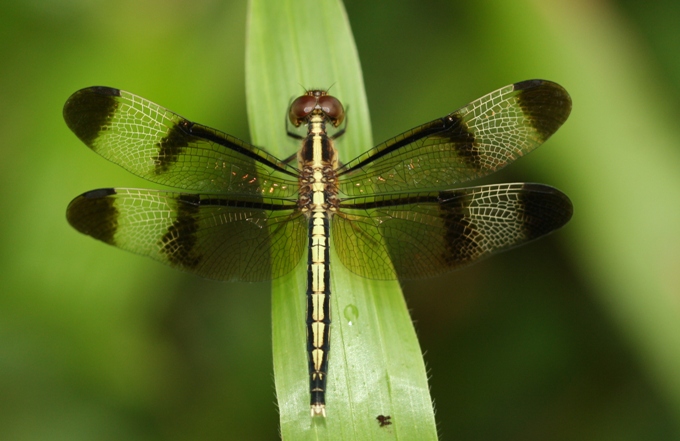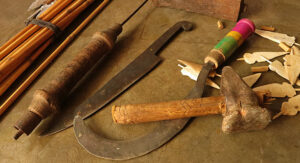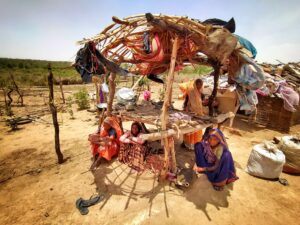Chatur, Helicopter, Mama ka Ghoda, Patanga are just some of the common names of the tiny flying drones that you will find near the wetlands of your city or gaon. Often ignored by us, these small insects are nature’s marvel, and their presence in the ecosystem is essential for our survival. Evolved around 300 millions of years, these insects are indeed masters of skies! So, what are these insects? How to identify them? And why should we care for them?
Scientifically categorized under the order Odonata, dragonflies and damselflies are freshwater insects that inhabit wetland areas such as ponds, lakes, rivers, estuaries, water reservoirs, puddles, and pools. Water is central to their life-cycle, just like it matters to us!
Odonates live a semi-aquatic life, meaning their egg and larval stages are underwater, and the adult stage is outside water. Female odonate after mating lays eggs underwater. The eggs hatch and tiny swimming larvae come out of it.
The larvae are voracious predators, and they can eat whatever they can catch, including mosquito larvae, tadpoles, small fishes, other Odonata larvae, and a wide range of aquatic insects. The larvae feed and grow bigger. As they grow bigger, they cast their skin (molting).
Eventually, they become so big that they have to come out of the water to conquer the aerial dimension. At night time, many such fat larvae start climbing on walls or sticks coming out of the water. Steadily and slowly, a beautiful dragonfly emerges from the larval cask.
The dragonfly waits for the sun to rise. In the morning’s sunshine, the dragonfly soaks its wings and then takes its first flight. Odonates are looked upon as symbols of freedom, joy, strength, and tolerance.
If you are wandering lake or river-side, you will end up seeing many odonates. They are the insect predators of the ecosystems. They control the population of several insect pests such as mosquitoes, locusts, grasshoppers, and other crop-damaging insects.
They release nutrients locked in these insects, which can be taken up by plants. Thus, odonates provide several ecosystem services which we cannot merely value in terms of money. Without odonates, the world will be inhabitable to humans! Observing and studying odonates is a joy very few know of and I am lucky to have experienced it!
Globally, around 6000 odonate species are found. About 500 species (1/12th of global diversity) are found in India. Odonates exhibit a tremendous variety of colors, shapes, sizes, and flight patterns. Differentiating between dragonflies and damselflies is easy. Dragonflies have a robust built, they always perch with their wings open, and their eyes are not separated. Damselflies have slender bodies, they sit with wings closed, and their eyes are separated.
Dragonflies are strong fliers and can disperse long distances. Have you observed orangish dragonflies flocking in the skies just before Monsoon? These are Wandering Glider dragonflies that follow monsoonal winds for their long journey. Every year, Wandering Glider (Pantala flavescens) migrates to Africa from India and back. It measures a 17,000 km of round trip, one of the longest insect migration known to science.
Odonates play a vital role in ecosystem maintenance. They are the top predators of the insect world. They keep in check populations of several pests, including mosquitoes. They are referred to as good ecological indicators. The presence and absence of some species are indicative of habitat health.
Being habitat sensitive, odonates suffer from habitat modification and water pollution. If these beautiful creatures are to survive, we must act wisely to reduce water pollution and safeguard our wetlands. On your next trip to your gaon, don’t forget to bond with the tiny fairies!
Dr Pankaj Koparde is the co-founder of DragonflySouthAsia & OwlIndia. He is working as an Assistant Professor at the Faculty of Social Innovation, Partnership, & Co-creation (SIPC), MIT World Peace University, Pune.



















